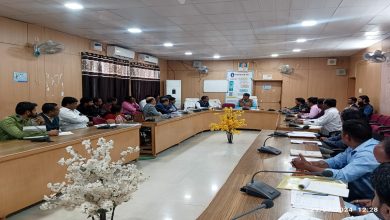In Sikkim, the move towards organic is faltering. here’s why

East Sikkim/Soreng | District: On a bitterly cold day in January 2016, Prime Minister Narendra Modi declared Sikkim as India’s first organic farming state.
“Sikkim is an example in the sense that when the idea of organic farming was raised here in 2003, it was not that there could be no opposition… Despite this, I salute the lakhs of farmers in Sikkim who Gave.” “Stay on your path, don’t give up your will…and today the whole world will be clapping for Sikkim,” Modi said at the historic plenary session of the National Conference on Sustainable Agriculture and Farmers’ Welfare in Gangtok. There are three major ethnic groups in Sikkim: Lepcha, Bhutia and Nepali. From 1642, Sikkim was ruled by the Chogyal (‘Dharma Raja’) – emperors of the Namgyal dynasty, who owned all the land in the state, and leased it to Bhutia and Lepcha nobles. The British, who made Sikkim a protectorate in 1861, encouraged Nepalese to migrate to the state for labour.
Researcher Anjan Chakraborty writes in his paper, Migration and Marginalization in the ‘Himalayan Kingdom’, “The migration of Nepalis to Sikkim brought about a technological change in agricultural practices in Sikkim, as neither the Bhutias nor the Lepchas had any knowledge of sustainable farming ” Sikkim. The elite used to lease land to Nepali immigrants for cultivation.
Researcher Debasish Das, in his 1994 book Sikkim: Society, Polity, Economy, Environment, writes about the “unequal distribution of land ownership” in the state. According to the ‘State Focus Papers 2023-24’ published by the National Bank for Agriculture and Rural Development, small and marginal farmers with an average land holding of 0.62 hectares (1.532 acres) account for 79% of the total land holdings.
It is easier to convert to organic in a “small state with small holdings” than in a larger state, Kunga Samdup, joint director of the Sikkim government’s agriculture department, told IndiaSpend.
In 2002-03, the state used 9.9 kg of nitrogenous and phosphatic (NPK) fertilizers per hectare of crop area, before former Chief Minister Pawan Chamling announced the government’s policy to convert the state to “fully organic”. It was the lowest in the country after Nagaland and Arunachal Pradesh. Compare this with states like Punjab, which used 172 kg of fertilizer per hectare in 2002-03, and Haryana, which used 150.4 kg of fertilizer per hectare.




